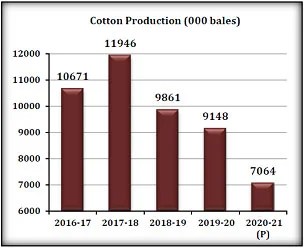Since cotton is a major source of income for various rural laborers, including women, according to the experts, they want to raise awareness of the critical role that cotton plays in economic development, international trade and poverty alleviation. As a crop resistant to climatic changes, cotton can be planted in dry and arid zones. Statistics showed that it occupies just 2.1 percent of the world’s arable land, but it meets 27 percent of the world’s textile needs. Approximately 80 percent of cotton is used in the clothing industry, 15 percent in home furnishings and the remaining 5 percent mostly accounts for non-woven applications, like filters and padding. Almost nothing from cotton is wasted. In addition to textiles and apparel, food products can be derived from it, like edible oil and animal feed from the seed. Other uses have been developed presently, like using cotton-based filaments in 3D printers, because they conduct heat well, become stronger when wet, and are more scalable than materials like wood.
| Area, Production And Yield Of Cotton | ||||||
|---|---|---|---|---|---|---|
| Area | Production | Yield | ||||
| Year | (000 Hectare) | % Change | (000 Bales) | % Change | (Kgs/Hec) | % Change |
| 2016-17 | 2,489 | – | 10,671 | – | 729 | – |
| 2017-18 | 2,700 | 8.5 | 11,946 | 11.9 | 753 | 3.3 |
| 2018-19 | 2,373 | -12.1 | 9,861 | -17.5 | 707 | -6.1 |
| 2019-20 | 2,517 | 6.1 | 9,148 | -7.2 | 618 | -12.6 |
| 2020-21(P) | 2,079 | -17.4 | 7,064 | -22.8 | 578 | -6.5 |
According to the domestic field experts in Pakistan, cotton crop stands vital in agriculture also textile sector of the economy. It contributes around 0.6 percent to Gross Domestic Product (GDP) and 3.1 percent of the value added in agriculture sector. It is also said that this crop faces multiple problems and competes with other crops mainly sugarcane. International prices also play a role. Being an export oriented raw material of textile industries, maintaining prices at levels competitive with the international market while ensuring due profitability of growers has been a great challenge for policy makers.
During 2020-21, cotton crop was cultivated on 2,079 thousand hectares, reflecting a contraction of 17.4 percent as against to last year’s sown area of 2,517 thousand hectares. Production fell by 22.8 percent to 7.064 million bales against production of 9.148 million bales previous year. Falling cultivated area has reduced production as the crop has lost its competitiveness relative to other major crops, in particular sugarcane.

Presently Pakistan is on course to meet or even exceed the revised cotton production target in 2021. It is revealed that the supply of cotton to ginning factories surged by 94 percent on a year-on-year basis to 5.208 million bales in October, 2021. Cotton supply to ginning factories in Sindh increased by 99 percent and in Punjab by 87 percent year-on-year. It is advised growers to focus on clean picking of the crop to maintain its quality, so they could obtain import parity prices. It is also said that government’s efforts for the revival of cotton crop, through raw material subsidies, provision of quality seeds and intervention price of Rs5,000 per 40 kg were bearing fruit.
Higher cotton prices are significantly raising the income of farmers. Hard work of cotton growers and favourable weather conditions had assisted in achieving higher yields. The experts also recorded that the poor pest management, shift in cotton area to other crops, climate variability, early sowing, poor quality Bt cotton seed, traditional procedures of spraying and gap between farmers and extension staff have been realized as the possible reasons behind cotton yield reduction despite the introduction of genetically modified varieties.
Sources recorded that combination of whitefly control policy and updating the curriculum of universities in connection with current agricultural issues faced through farming community may provide sustainable cotton production in Pakistan.
Statistics showed that because of government interventions, 8.46 million bales of cotton production was likely to hit during the current season. Cotton production in the province is expected to touch 4.5m bales with an increase of 8.5 percent from last year. Statistics also showed that year 2020 witnessed 398.6 mm rainfall which cussed devastating impact whereas this year the rainfall was 78.6 mm which has improved the prospect of overall production.